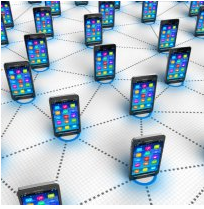 The phone in your pocket will be obsolete in a couple of years. Depressing, isn’t it? Maybe a little, but that’s just the reality of the tech world. The devices of yesterday are becoming extinct, and what we use now will soon be outdated. Technology is a constant game of catching up and adapting to the latest innovations and trends.
The phone in your pocket will be obsolete in a couple of years. Depressing, isn’t it? Maybe a little, but that’s just the reality of the tech world. The devices of yesterday are becoming extinct, and what we use now will soon be outdated. Technology is a constant game of catching up and adapting to the latest innovations and trends.
 The phone in your pocket will be obsolete in a couple of years. Depressing, isn’t it? Maybe a little, but that’s just the reality of the tech world. The devices of yesterday are becoming extinct, and what we use now will soon be outdated. Technology is a constant game of catching up and adapting to the latest innovations and trends.
The phone in your pocket will be obsolete in a couple of years. Depressing, isn’t it? Maybe a little, but that’s just the reality of the tech world. The devices of yesterday are becoming extinct, and what we use now will soon be outdated. Technology is a constant game of catching up and adapting to the latest innovations and trends.
This recent tech revolution has put businesses in a tough position. It was once customary to issue standard devices to new employees. BlackBerrys were the business phone of choice, and they were usually paired with an old, dusty laptop. Those were the devices you used at work, and you had separate devices at home for personal use. Then things started to change. More and more devices began hitting the market, people began to use them and they recognized their potential. Personal adoption of new devices outpaced the corporate world, and suddenly people were frustrated using their old, work devices. They prefered using their newer, better devices for work. After all, this new technology was faster, did more, and greatly improved productivity. At first businesses resisted, but soon drank the Kool-Aid and started adopting policies that allowed employees to bring their own devices to work.
BYOD is becoming increasingly popular, but there are challenges that accompany the mixture of personal and professional information on the same device. BYOD security concerns like device hacking, viruses and device mismanagement will continue to act as threats to data loss. However, the benefits often outweigh the concerns. Employees who have embraced past and current tech trends will continue to do so. This means employers should continue to expect new innovations to make their way into the office.
This leads us to BYOD 2.0. Smartphones and tablets are the current popular devices and the devices employees are looking to use at work. However, we can already see new devices coming down the pipeline. One great example is Google Glass, and other forms of wearable technology. These new devices present new possibilities for many business functions, like improved customer service or sales.
With all that being said, how can businesses prepare? BYOD isn’t going anywhere, and the next-generation devices that’ll shape BYOD 2.0 are just around the corner. How can businesses meet these changes head on?
Here are a few simple steps companies can take in order to lay the groundwork for what lies ahead:
1. Evaluate needs
Before you start overhauling any policies, or order a whole bunch of new iPhones, it’s important to evaluate your needs. Review your goals, employee roles and responsibilities, and understand IT requirements. Make sure that whatever decision you make, you’re solving the problems you have. It doesn’t make sense to just copy what competitors are doing, or what others in your industry are implementing.
2. Develop policies
You should create a BYOD Bill of Rights. This document would explain the rights and responsibilities of both employees and employers, with regards their devices. This is a great way to communicate the interests of the company and explain procedures and rules. This document should also explain what the consequences are if an employee misplaces a device containing company information.
3. Communication Plan
A Bill of Rights is great, but useless unless people know about it and understand it. It’s important that businesses take an active role and educate and train employees in proper procedures regarding their devices. The idea isn’t to tell people how they must use their devices, but rather to educate them on how to protect company data.
4. Pick the right mobility management software
Not all Mobile Device Management (MDM) is created equal. Picking the right vendor and the right services should take time and research. There are a number of different options available, some too basic, others too advanced for your needs. Make a checklist of the features you’ll need, look for vendors that support the latest products and finally, evaluate vendors based on their expertise and past performance.
New devices will continue to emerge, so a company must ultimately create a BYOD plan that is flexible. Because new technology is always rolling out, companies should review their plans and policies often, and make the necessary adjustments to reflect these changes.









